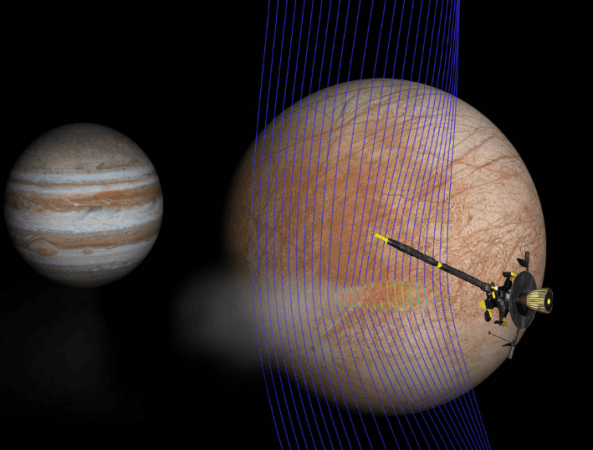One of the biggest mysteries that has baffled scientists and astronomers for years is signs for life beyond Earth. Europa, one of Jupiter's many moons, has widely been considered to harbor alien life due to its warm, saltwater ocean underneath a thick icy crust, and there's new evidence supporting the claim.
After reanalyzing data collected by NASA's Galileo spacecraft more than two decades ago, scientists have discovered water plumes shooting into space as high as 100 miles off Europa's surface. If the plumes are confirmed to be from Europa's ocean, it could simplify the process to sample the moon without having to dig through 15 miles of ice. A spacecraft flying past the spray could collect the contents for testing.
"We know that Europa has a lot of the ingredients necessary for life, certainly for life as we know it. There's water. There's energy. There's some amount of carbon material. But the habitability of Europa is one of the big questions that we want to understand," planetary scientist Elizabeth Turtle of Johns Hopkins University Applied Physics Laboratory, said in a statement.

The data, that has been available since 1997, was put through modern and advanced computer models to understand the pile of data gathered by Galileo. There was a fair amount of suspicion of plumes from Europa's surface, but there was no hard evidence to back it up.
That was until Xianzhe Jia, a planetary scientist at the University of Michigan, studied the ancient data and found that plumes did exist based on the unexplained fluctuations in magnetic waves on the moon's surface. Adding more credibility to the latest findings, data from Hubble suggested dimensions of potential plumes, which matched to the data gathered by Galileo.
The latest findings are great news for future space exploration missions, especially for the Europa Clipper mission and the European Space Agency's Jupiter Icy Moons Explorer (JUICE), which are expected in the mid-2020s. The Clipper can maintain a low-altitude over the moon's surface and gather a sample of the frozen liquid and dust particles from the plumes.
"There now seem to be too many lines of evidence to dismiss plumes at Europa. This result makes the plumes seem to be much more real and, for me, is a tipping point. These are no longer uncertain blips on a faraway image," Robert Pappalardo, Europa Clipper project scientist at NASA's Jet Propulsion Laboratory (JPL) in Pasadena, California.
The research was published in the Journal Nature Astronomy on Monday, May 14. The question of whether there is life on Europa, despite harboring favorable conditions, remains unanswered, but not for too long we suppose.















